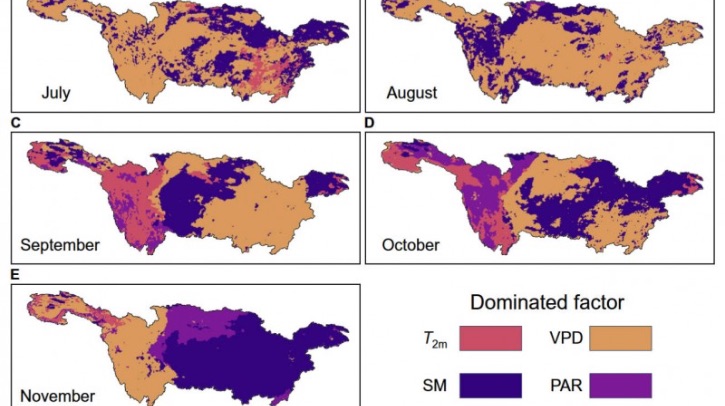A team of researchers from the China University of Geosciences (Wuhan), the Institute of Geographic Sciences and Natural Resources Research (CAS) and East China Normal University have introduced a solar-induced chlorophyll fluorescence (SIF) model to track drought effects in real time. The study, published in the Journal of Remote Sensing, details how the method generates SIF data from the OCO-2 and OCO-3 satellites.
According to the team, the key innovation of the study is the development of a continuous hourly SIF dataset, HC-SIFoco, which tracks vegetation photosynthesis dynamics during droughts. With a high level of accuracy, the dataset demonstrated R² values of 0.89 for SIF and 0.94 for gross primary productivity (GPP) when compared to ground-based observations.
Findings revealed that drought stress causes a rapid decrease in vegetation fluorescence efficiency (Φf), leading to anomalies in SIF and canopy structure. The study also showed that midday depression in photosynthesis increased by around 3% during the 2022 drought in the Yangtze River Basin, and that the seasonal peak of photosynthesis occurred earlier than in previous years.
Integrating satellite data
To create the HC-SIFoco dataset, the team employed machine learning (ML) techniques, specifically the LightGBM model, to fuse SIF data from OCO-2 and OCO-3 satellites. The model integrated variables such as photosynthetically active radiation (PAR), temperature, vapor pressure deficit (VPD), soil moisture (SM) and land cover types.
Spanning September 2014 to September 2023, the dataset covers the Yangtze River Basin with a spatial resolution of 0.05°. Validation against ground-based and satellite data confirmed the accuracy of the dataset in capturing both diurnal and seasonal photosynthesis dynamics. Notably, the research highlighted that VPD accounted for over 70% of the decline in SIF during drought conditions, with soil moisture playing a key role in the later stages.
Developing early warning systems
“Our study provides a new lens through which to observe how vegetation responds to drought in real-time,” said Dr Zhuoying Deng, lead author of the study. “The hourly SIF dataset not only deepens our understanding of drought impacts but also presents exciting new opportunities for early drought warning systems and ecosystem management.”
The researchers used advanced ML algorithms to extend the spatiotemporal coverage of OCO-2 and OCO-3 SIF data. The LightGBM model was specifically designed to process large datasets efficiently and capture complex, non-linear interactions among environmental variables. The model was trained using critical factors such as PAR, temperature, VPD, SM and land cover, and rigorously validated against both ground-based SIF and GPP observations.
This high-resolution SIF dataset is said to hold great potential for real-time drought monitoring and ecosystem management. The researchers state that, in the future, it could be integrated with climate models to forecast vegetation responses to extreme weather events.
The dataset could also play a key role in developing strategies to mitigate drought impacts on agriculture and biodiversity, contributing to global efforts to combat climate change.
In related news, researchers from the Military University of Technology Poland and Griffith University have combined two advanced satellite-based methods – the Global Positioning System (GPS) and the Gravity Recovery and Climate Experiment (GRACE) – to improve the monitoring of hydrological droughts. Click here to read the full story.



